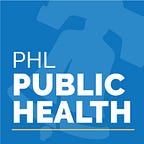Tobacco Sales and Neighborhood Income in Philadelphia
6 min readJul 15, 2016
- Smoking remains the leading underlying cause of death in Philadelphia, with more than 2,000 estimated attributable deaths.
- Neighborhoods with more retailers that sell tobacco (i.e., high tobacco retailer density) have higher smoking rates in adults and youth. Teens in neighborhoods with more tobacco retailers are more likely to experiment with smoking.
- In Pennsylvania, the tobacco industry spends $454.2 million on advertising and marketing (as estimated by the Campaign for Tobacco Free Kids as the portion of nationwide annual tobacco industry marketing from the Federal Trade Commission Cigarette Report that was spent in Pennsylvania prorated based on cigarette pack sales in the state) which is approximately $35 per Pennsylvania resident.
- Point-of-sale tobacco marketing, to which youth are particularly susceptible, is widespread at retail stores in Philadelphia. Tobacco retailers near schools place more tobacco marketing materials near products for children, such as candy, than tobacco retailers in other locations.
- Tobacco marketing also thwarts attempts by adults to quit smoking.
- This issue of CHART summarizes data on tobacco retailers in Philadelphia’s neighborhoods.
- In Philadelphia in 2015, approximately 48% of tobacco retailers were located in low-income zip codes, 33% in mixed-income zip codes, and 19% in high-income zip codes. (This can be compared to the population distribution in that 37% of the population live in low-income communities, 38% in mixed-income communities, and 25% in high-income communities.)
- The number of tobacco retailers per capita was significantly higher in low-income than mixed-income zip codes (2.45 vs. 1.71, p<.01) and 69% higher in low-income zip codes than high-income zip codes (2.45 vs. 1.45, p<.01).
- On average, K-12 schools had 1.1 tobacco stores within 500 feet and 4.9 stores with 1,000 feet.
- Schools in low-income zip codes had on average 63% more tobacco retailers within 500 feet than schools in a high-income zip code (1.3 vs. 0.8).
- Of all 2,973 tobacco retailers in Philadelphia in 2015, 17% were located within 500 feet (about 2 blocks) of a school and 58% were located within 1,000 feet (about 4 blocks) of a school.
- Of all the tobacco retailers within 500 feet of schools, 51% were in in low-income zip codes.
- Adults in low-income zip codes are significantly more likely to smoke than adults in high-income zip codes.
- Smoking rates were generally higher in zip codes with more tobacco retailers, even after taking into account zip codes’ population density and income level (p<.01). For each additional tobacco retailer in a zip code, the smoking prevalence for that zip code was, on average, 0.07% higher. Each zip code in Philadelphia is represented as a small circle on the graph above.
- In the Household Health Survey conducted by Public Health Management Corporation, over 3,500 Philadelphians were asked if they would shop at stores, “less,” “more,” or, “about the same,” if they stopped selling tobacco products. Approximately 80% responded they would shop at about the same amount (or frequency). More respondents said they would shop more often if stores stopped selling tobacco (12%) compared to respondents who said they would shop less often (8%, p<.001).
The Health Department is:
- Encouraging smokers to quit with media messages, such as the CDC’s “Tips From Former Smokers” campaign
- Helping smokers quit by training healthcare providers to better assist smokers in quitting and making quitting help more available to Philadelphians
- Working with retail stores to help them stop selling tobacco while still being profitable
Health care providers can:
- Ask all patients if they smoke
- Utilize reminder systems to help make sure you counsel smokers to quit and offer medications or other assistance
Retail stores can:
- Avoid putting tobacco advertisements or other marketing materials on the outside of stores or inside where children can see them
- Stop selling cigarettes and other tobacco products
- Sell nicotine patches, gum, and other cessation products
People can:
- Not start smoking
- Quit if you’re already a smoker; call 1–800-QUIT-NOW for free coaching and quit smoking medications
- Talk to neighborhood retail stores, encouraging them to not sell or promote cigarettes or other tobacco products
- Choose to shop in stores that do not sell tobacco products
- SmokeFree Philly provides information on the harms of tobacco use and quit-smoking resources, including free community-based cessation classes.
- CounterTobacco.org is an online resource for local, state, and federal organizations working to counteract tobacco product sales and marketing at the point of sale.
- The Campaign for Tobacco-Free Kids works to reduce tobacco use and its consequences in the U.S. and globally through advocacy for policies aimed at youth smoking prevention, smoking cessation, and protection from secondhand smoke.
- If you see tobacco products being sold to kids in your neighborhood or sales of “loosies”, call 1–888–99-SMOKE or go to SmokeFree Philly to file a complaint.
- You can see maps and stories about these data at SmokeFree Philly.
Suggested citation: Philadelphia Department of Public Health. Tobacco Sales and Neighborhood Income in Philadelphia. CHART 2016;1(2):1–6.
Detailed information on methods can be found in the technical supplement available here.
CHART is a publication of the Philadelphia Department of Public Health, and is intended to highlight under-reported or under-appreciated public health issues in an effort to kick-start a conversation. Readers can subscribe to CHART on Medium, or on our website.
